These Cool Birds Will Make You Want to Get Into Birding
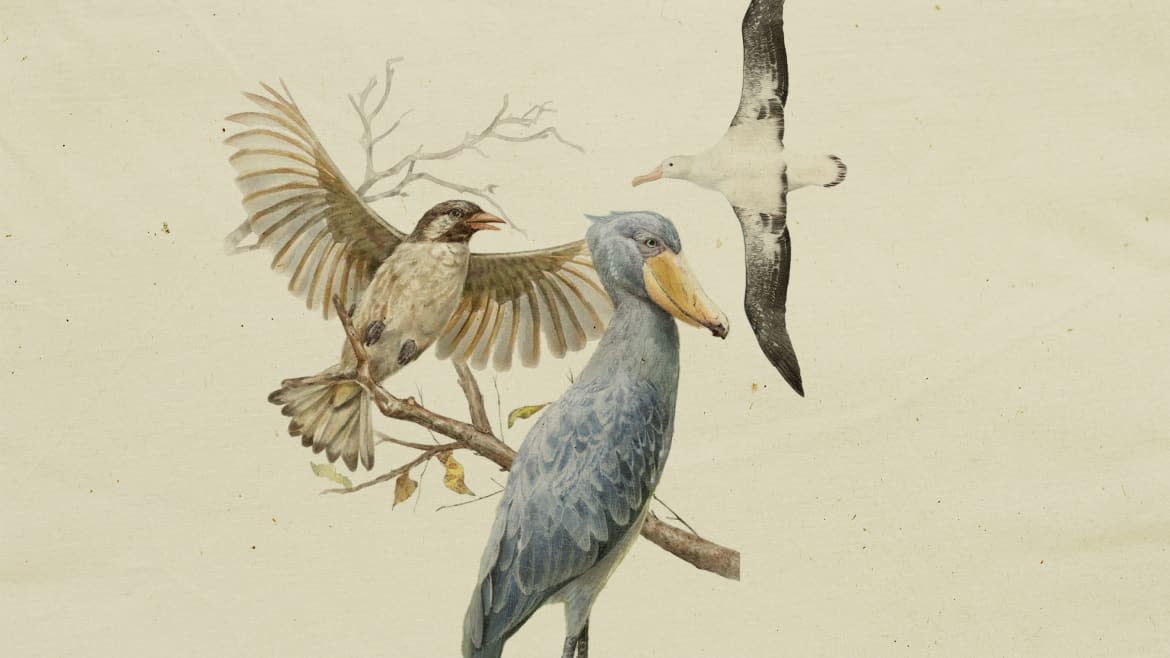
As a child, I learned about the world through birds: Antarctica had emperor penguins; the Great Rift Valley meant flamingos, New Guinea was for birds-of-paradise, and so on. As an adult, and now a travel writer, it is still birds that help me navigate the globe. Birds have imbued each place I’ve ever visited – from deepest jungle to city center – with its own avian associations, and just a glimpse of those birds again, or a snatch of their voice, brings back that place in an instant. And it isn’t only me: birds have so deeply embedded themselves in our lives, languages and cultures the world over, from the sacred quetzal of the Aztecs to the mighty bald eagle of the US Air Force.
Many birds are celebrated for their gorgeous colors and beautiful displays. In this respect, few species top the Andean cock-of-the-rock of Peru’s dense cloud forests. I remember one dawn in Manu National Park creeping to a traditional display site to watch a group of males strut their stuff before a judging panel of females. Their fluorescent orange plumage was so dazzling that they seemed to glow in the murky half-light like lanterns. Weirdness can be just as impressive. I’ll never forget my first sighting of an elusive shoebill deep in a papyrus swamp in Uganda. It wasn’t until this bizarre stork-sized bird beast turned to face me, revealing a beak the size and shape of a Dutch clog, that I understood what all the fuss was about.
With other birds, it is the things they do. In Zambia, a greater honeyguide once deliberately led me and my companions to a bees’ nest in a baobab tree. This unobtrusive little bird feeds on bees’ wax and has evolved the trick of guiding traditional honey-gatherers to bees, hoping for left-overs. We followed the bird’s frantic ‘guiding’ call a kilometer through the dense bush, dodging elephants in the process, until we arrived at the prize. The bearded vulture is a huge bird of prey that feeds entirely on bone marrow, which it obtains by dropping bones from on high down onto rocks to smash them open. On a steep trail in Spain’s Pyrenees mountains, I once heard the sharp crack of a large bone dropped into a rocky gully and looked up to see the raptor soaring overhead. This species reputedly killed the Ancient Greek playwright Aeschylus by dropping a tortoise in his head!

Perhaps the most exciting birds for any traveler are the migrants whose astonishing journeys criss-cross the globe. The white stork, traditional baby-carrier of legend, is one of numerous species that travel twice a year between northern European and sub-Saharan Africa. I have watched this bird both on its church tower nests in the villages of France and Germany, and at the other end of its journey, foraging on the grasslands of the Serengeti Plains and the Kruger Park. It is thanks to one individual that turned up in a small German town in 1822 with a hunter’s arrow through its neck, miraculously still alive, that the truth about bird migration first began to dawn on scientists. And for sheer miles on the clock, surely nothing beats the wandering albatross. This huge seabird, which has a wingspan of over 10 feet, may cover more than 70,000 miles a year as it circles the oceans. I have stood on deck in the south Atlantic, hundreds of miles from land, watching one glide past my ship without so much as a flap, and wondered just how much we still have to learn about the lives of these amazing feathered voyagers.
Shoebill (Balaeniceps rex) - Uganda
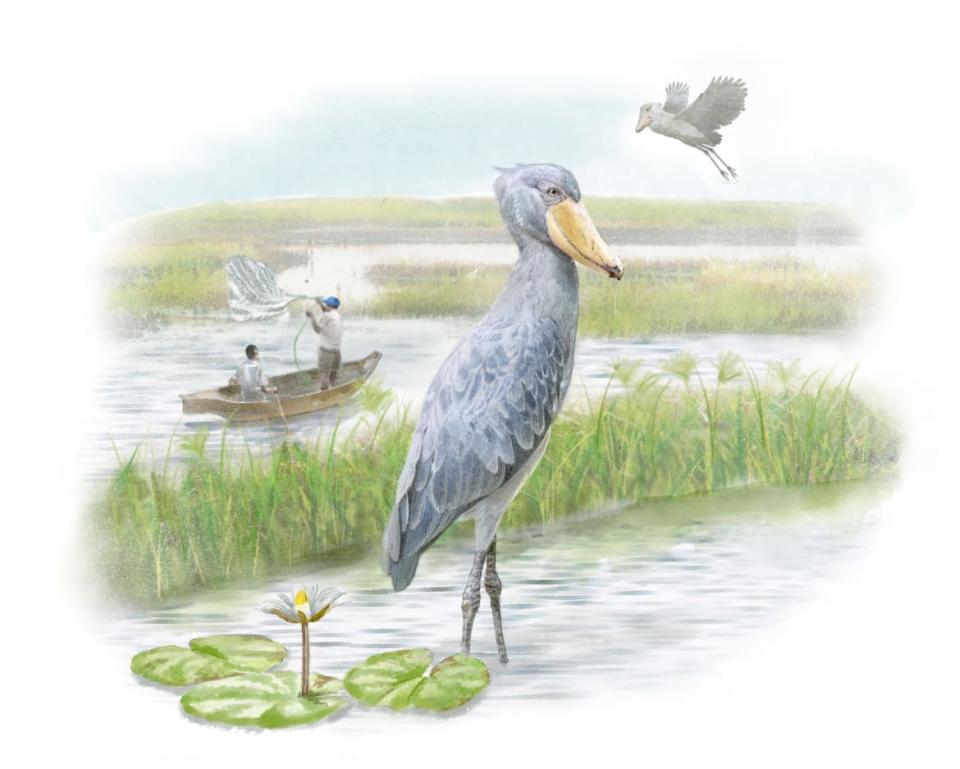
John Gould was most impressed when, in 1851, a shoebill landed – so to speak – on his desk. "The most extraordinary bird I have seen for many years," said the celebrated Victorian naturalist, describing the species to the Zoological Society of London. The specimen had been obtained the previous year by German explorer Ferdinand Werne, while traversing the vast Sudd swamps in search of the source of the Nile. It was the first known to Western science.
A veteran of bird-collecting, Gould was not one for hyperbole. Yet the colorful scientific name he gave this species – Balaeniceps rex means "king whale-head"– attests to its impact on him. Today some still call the bird the "whale-headed stork." However, its better-known common name, shoebill, derives from the Arabic abu markub – "father of the shoe." This both celebrates the bird’s most prominent feature and is evidence that other cultures knew about the species much earlier. Indeed, the shoebill is identifiable in petroglyphs from the Oued Djerat, eastern Algeria, that date to the early Holocene, when wetlands covered what is now the Sahara.
The taxonomy of the shoebill continues to puzzle scientists today. Gould’s initial theory that it was related to pelicans was dismissed; some scientists placed the bird among the herons and others among the storks. But DNA evidence has now returned it to the Pelecaniformes, thus vindicating the celebrated Victorian.
Whatever its name and evolutionary affinities, the shoebill is certainly an imposing creature, standing up to 1.5 meters (5 ft) tall and spanning as much as 2.5 meters (just over 8 ft) across its broad wings. But what Gould found most "extraordinary" is the enormous beak. Measuring 23 centimeters long by 10 centimeters wide (9 by 4 in), this appendage protrudes like a Dutch clog and is just as capacious. What’s more, it comes with a wicked hook on the tip, and sharp slicing edges along the lower mandible.
The shoebill’s celebrated beak makes it Africa’s ultimate ambush fisher. Standing stock-still in the hidden channel of a papyrus swamp, it lunges at any suitable victim within range, using its bill to scoop, stab and crush all in one. Although its preferred prey is fish such as the African lungfish, it may also target turtles, snakes, water birds and even young crocodiles. Anything that fits the bill, as it were.
That such a distinctive bird managed to elude Western science until 1851 reflects its choice of habitat: the shoebill is confined to some of Africa’s most inaccessible wetlands and requires at least 2 square kilometers (¾ sq. mile) of undisturbed territory in which to breed. Although the Sudd, now in southern Sudan, still holds the largest population, Uganda offers the easiest sightings, notably along the Victoria Nile, in Murchison Falls National Park, and around the northern shores of Lake Victoria.
Today the shoebill’s range spans nine countries across central Africa, from Sudan in the north to Zambia in the south. With its fragmented population estimated at no more than 8,000 birds, and threatened by swamp drainage, the species is listed by the IUCN as Vulnerable. For birdwatchers worldwide, it remains one of the planet’s most sought-after "ticks."
Greater Honeyguide (Indicator indicator) - Zambia
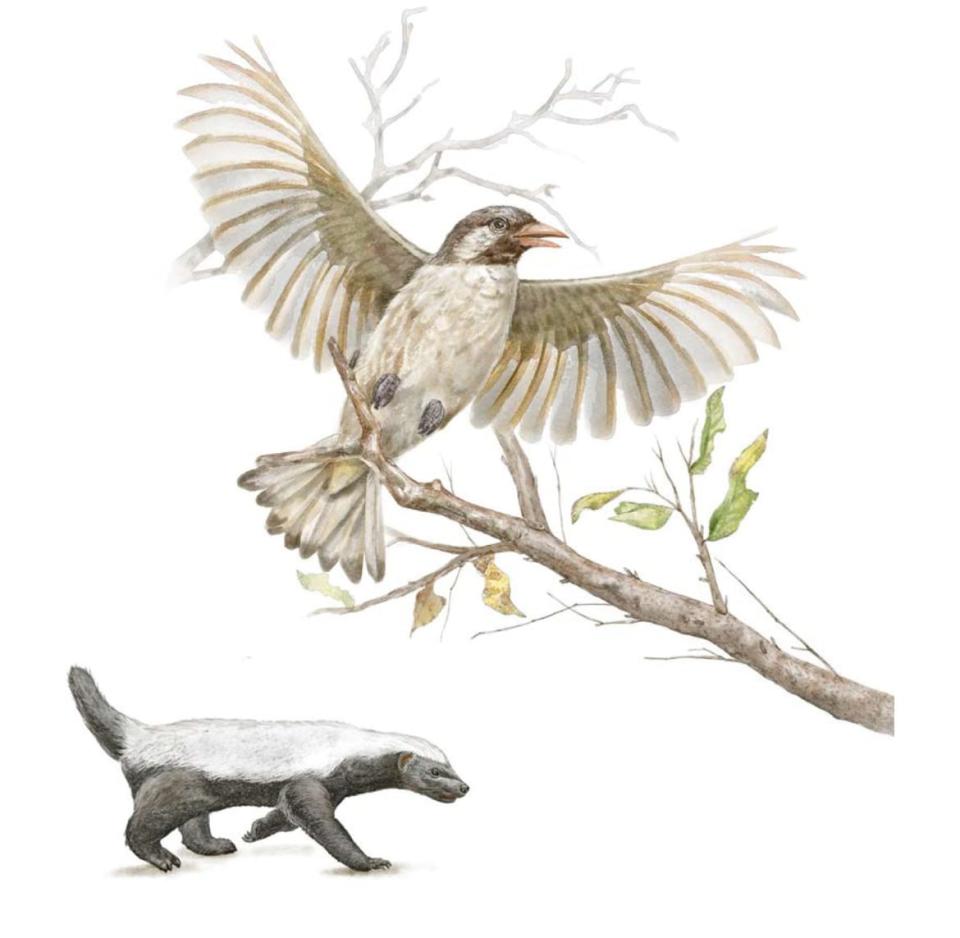
An early morning in the dense miombo woodlands of Kafue, central Zambia, finds two men following a bird through the bush. The bird is nothing special to look at – a typical "little brown job," with a short pink bill and black bib, it might escape most people’s notice – but these men, from the local village, know better.
Besides, the bird is clearly inviting the men’s attention, twittering persistently as it hops from tree to tree, and flashing its conspicuous white outer tail feathers. Each time they approach, it leads them a little further, its twittering rising to a frenzy when they appear to take a wrong turn. After a kilometer (½ mile) or so, they reach a large baobab, whereupon the bird flits on to an upper limb of the tree and falls silent. It has performed its part of the deal; now its followers must complete theirs.
This avian Pied Piper is a greater honeyguide, and it does exactly what its name suggests: guides people to honey. Sure enough, the men can now hear the telltale hum of a bee’s nest emanating from a hole in the trunk of the baobab. Using a smoking branch, they subdue the irate bees before clambering up to scoop out the honeycomb. The bird waits patiently. Once the men have left, it will tuck into the leftovers. This is a time-honored arrangement, and one that has traditionally provided sticky sustenance to many rural communities across Africa.
Of the 17 species of honeyguide (family Indicatoridae), this species – which occurs in open woodland across much of sub-Saharan Africa – is one of only two known to perform the family’s eponymous trick. It is also said to provide the same service for the honey badger, a voracious carnivore with an appetite for honey and a skin thick enough to protect it from stings, although this relationship remains unsubstantiated. Either way, the bird certainly earns its scientific name: Indicator indicator.
The honeyguide itself does not eat the honey. Its interest is in the juicy grubs left in the honeycomb – and in the beeswax, which it has a unique ability to digest. When no mammalian help is available, it will go it alone, entering hives early in the morning, when the bees are still torpid, or feeding on nests already ransacked by honey badgers. At times, it may also capture swarming termites and other flying insects.
Convincing large mammals to provide its meals is not the only way in which the greater honeyguide outsources its labor. Like the cuckoo (see page 54), it is a brood parasite, laying its eggs in the nests of other birds – primarily hole-nesters such as barbets and kingfishers – who rear its chicks as their own. The female deposits a single egg in each of several nests, laying up to 20 in a season. She may crush the host’s eggs in the process. If not, her young hatchling, still blind and featherless, uses a sharp spur on its bill to puncture the host’s eggs and kill its chicks.
There is one caveat for those who wish to exploit the honeyguide’s services. African folklore warns that you should always leave behind a gift of honey. Otherwise, next time the disgruntled bird will lead you to something less appealing: a black mamba, perhaps, or an angry leopard. You have been warned.
Bearded Vulture (Gypaetus barbatus) - Spain
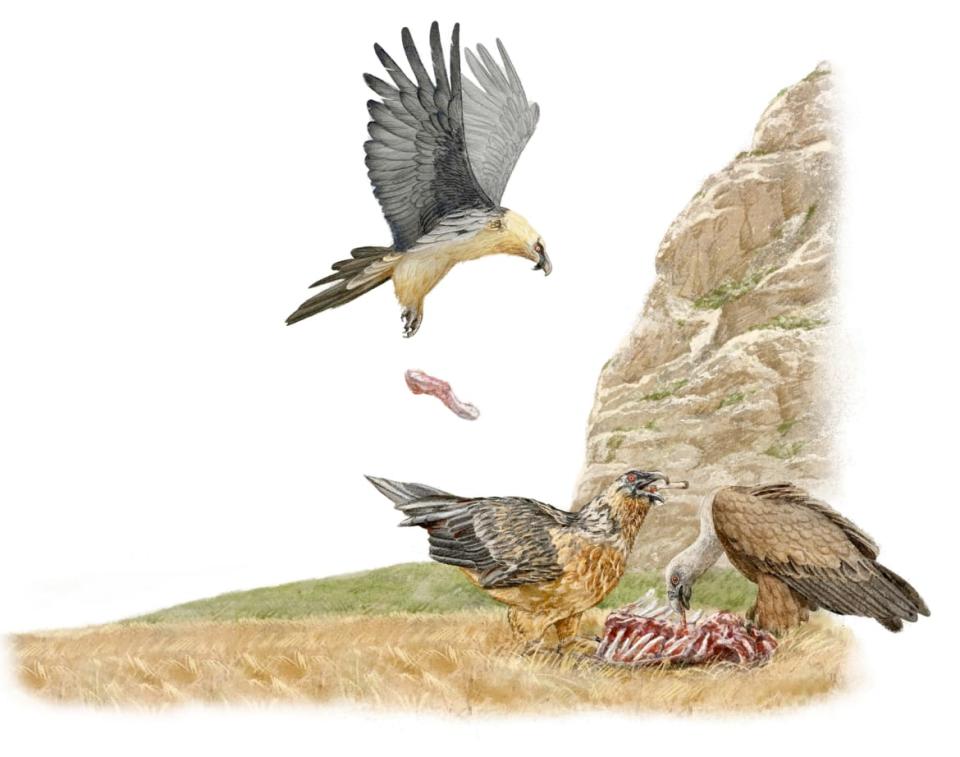
Crack! A sharp report rings out from a ravine high in the Spanish Pyrenees. You look up to see a large bone clattering over the boulders below, shattering as it tumbles. Seconds later, a shadow sweeps across the cliff face as a huge bird glides down to alight beside the broken pieces. Now you understand. It was the bird that dropped the bone, breaking it quite deliberately, and it’s coming to retrieve the spoils.
Quebrantahuesos – literally ‘breaker of bones’ – is the Spanish name for what English-speaking ornithologists know, more prosaically, as the bearded vulture. This enormous bird of prey is unique among vertebrates in being the only species that feeds almost entirely on bones, which it obtains from animal carcasses found in its mountain lair. To break these bones into more manageable chunks, it has evolved the ingenious technique of carrying them aloft and dropping them to smash into pieces on the rocks below. This trick may take a youngster seven years to perfect.
You might think bones a rather unappetizing, not to say awkward, diet, but the bearded vulture gets up to 90 per cent of its nourishment from this source, and bone marrow is highly nutritious, rich in fat, and remains so for months after the rest of a carcass has rotted away. The bird swallows impressively large chunks whole, its fearsome stomach acids breaking them down in less than 24 hours.
Bearded vultures live at high altitudes – often above 2,000 meters (6,500 ft) – in mountain ranges across Eurasia and Africa, from the Pyrenees to the Himalayas and from the Ethiopian Highlands to South Africa’s Drakensberg. Throughout this range, their curious lifestyle has long given rise to myth and superstition. The birds were once heavily persecuted across much of Europe, erroneously blamed for snatching livestock and even children (the bird’s alternative name, lammergeier, is German for ‘lamb slayer’). In Iran, by contrast, the bird has always been a harbinger of good fortune, and anybody who killed one was traditionally doomed to die within 40 days.
It is from ancient Greece, where prophetic powers were attributed to the bird, that one of the most curious stories hails: the playwright Aeschylus reputedly met an unfortunate demise when an eagle dropped a tortoise on his head. Given that the bearded vulture may sometimes deploy its bone-smashing technique on tortoise shells, historians speculate whether this species might have been the real culprit.
Irrespective of myth and folklore, the bearded vulture is unmistakable. Measuring up to 2.8 meters (9 ft) across its long, narrow wings, it differs from other vultures in having a fully feathered head and neck, including the tufted ‘beard’ of feathers below the bill from which it gets its English name. Pairs occupy huge territories in remote, rugged terrain, building massive stick nests in which they raise one or two chicks, which sometimes remain dependent on their parents for up to two years.
This unusual raptor is in decline worldwide, and was upgraded by the IUCN in 2014 to Near Threatened. In Europe an ambitious reintroduction program is working to restore the lost population in the Alps. For now, Spain remains the continent’s best location in which to glimpse the breaker of bones, with a population of some 100 breeding pairs that appears to be slowly increasing.
White Stork (Ciconia Ciconia) - Germany
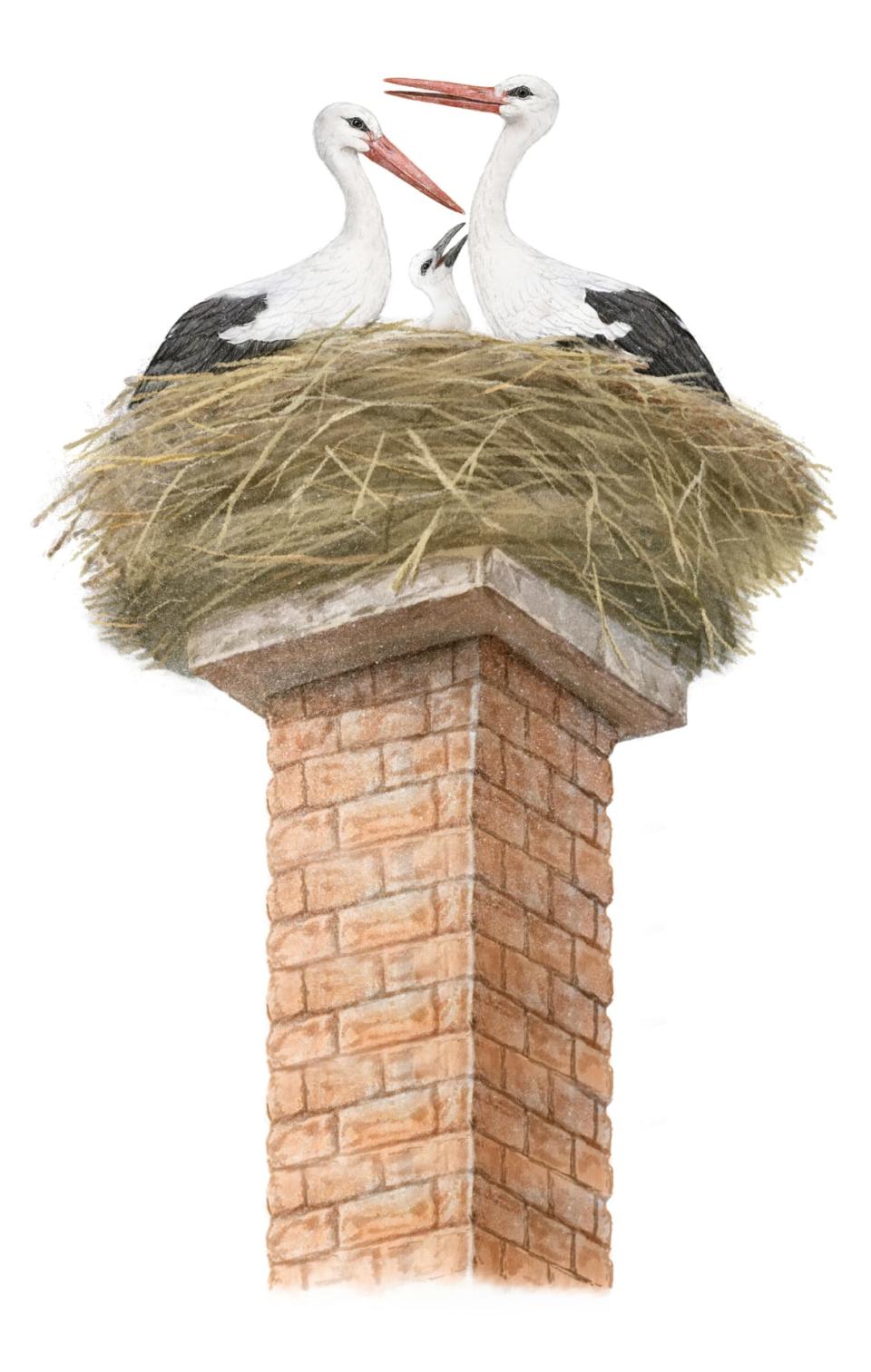
In the spring of 1822 a white stork appeared in the north German town of Klütz. Nothing unusual about that; after all, for centuries these big birds have been welcomed back every year to towns all over Europe. To the astonishment of the townsfolk, however, this individual had an arrow through its neck. Where on earth had it been?
The arrow, it turned out, was of African origin. The bird, now preserved in the University of Rostock, thus provided living proof – decades before ringing allowed scientists to verify bird migration – that when white storks departed every autumn from the German villages in which they’d nested, their destination was thousands of miles away on another continent. Amazingly, another 25 such storks, known in German as Pfeilstorche, or "arrow storks," have since been documented.
Scientists, thankfully, have since found less brutal ways of studying the white stork’s migration. This big black-and-white bird, with its predilection for nesting alongside people, has long been celebrated in culture, whether as mythical pilgrim to Mecca or fabled deliverer of babies. That has made its seasonal comings and goings among the easiest of any bird to observe and document. Indeed, this species was the subject of one of the first ever bird-ringing projects, conducted at Germany’s Rossitten Bird Observatory from 1906, and in more recent times was among the first birds to be kitted out with satellite transmitters for more precise monitoring.
The nests of white storks are hard to miss. These birds invariably construct their large stick-platform nests on elevated manmade structures, from church towers to telegraph poles. During the breeding season they are very noisy, their bill-clattering greeting displays rattling out like machine-gun fire overhead. A monogamous pair produce up to four chicks each season, and the youngsters, if they can dodge the arrows – or more modern hazards, such as power lines – may go on to live for more than 30 years.
This species breeds across Europe, with concentrations in Iberia, north Africa, Central and Eastern Europe, and western Russia. The great majority overwinter in sub-Saharan Africa, from the Equator to the Cape. They set out from August in large, loose flocks, using thermals to spiral skywards – reaching a height of 1,500 meters (5,000 ft) – then soaring in order to conserve energy. To avoid long ocean crossings, which offer no thermals, they converge on narrow sea straits. Two principal southbound routes have evolved: one westbound, over Gibraltar then around the western fringes of the Sahara; the other eastbound, via the Bosphorus and on down the Nile valley.
In both Europe and Africa, white storks frequent open ground such as marshes, farmland and savannah, where they forage for insects, frogs and other small prey. Historically, human activity has benefited the species, with forest clearance across Europe during the Middle Ages expanding their access to this habitat. In more recent times, industrial development, modern agriculture, and uncontrolled hunting along the stork’s migration flyways – today with shotguns rather than arrows – have all conspired towards its decline. However, reintroduction projects have returned the bird to former breeding haunts in the Netherlands, Belgium, Switzerland, Sweden, and the United Kingdom, and today over 4,000 pairs still return to Germany every year.
Wandering Albatross (Diomedea exulans) - South Georgia
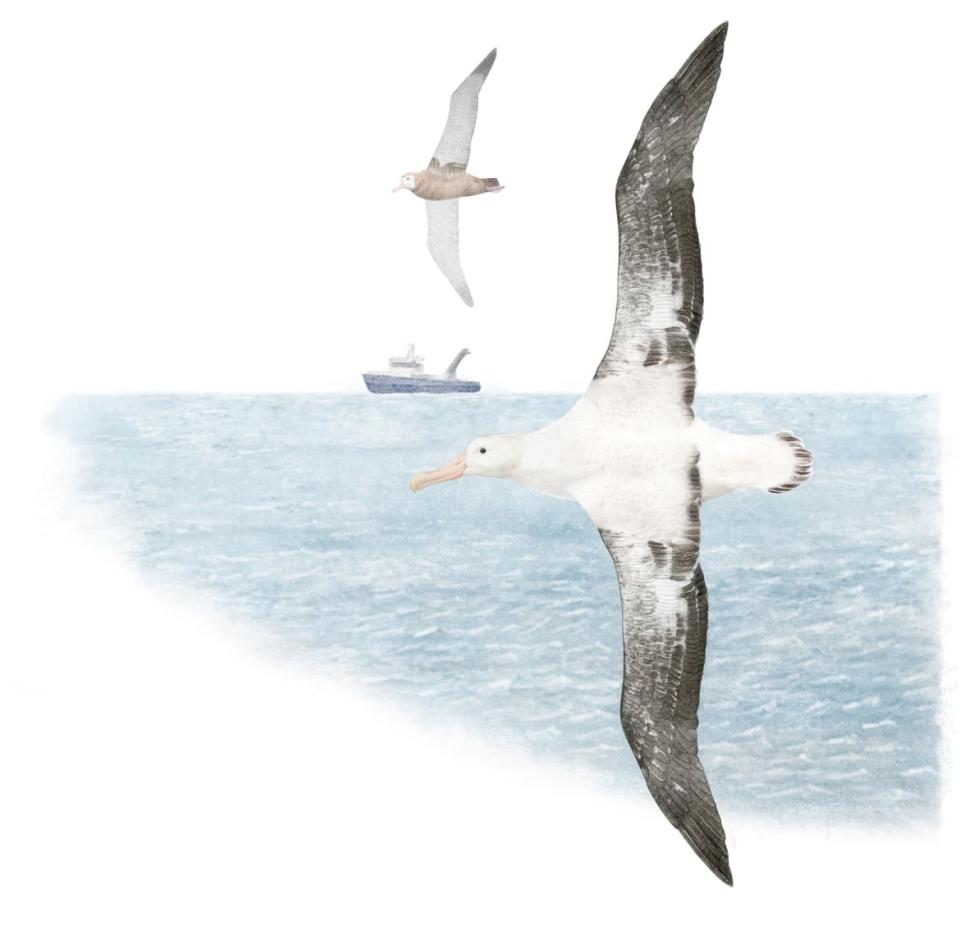
This enormous ocean-going bird derives its scientific name exulans from the ancient Greek for "exile." To sailors, its lonely nomadic odyssey on the world’s wildest oceans has long struck a chord, hence its significance in maritime folklore. Indeed, in some cultures, the killing of an albatross is an ill omen – as in Samuel Taylor Coleridge’s famous poem "The Rime of the Ancient Mariner," whose narrator courts disaster by doing just this and is forced to wear the dead bird around his neck in penance.
The wandering albatross is the biggest of 22 albatross species, and its 3.1-meter (10 ft) wingspan – occasionally topping a whopping 3.65 meters (12 ft) – is the largest of any bird. Few species are more aptly named: any vessel plying the Southern Ocean can expect to meet this wanderer, angling effortlessly past on its long, narrow wings to who knows where. Its breeding quarters offer only a temporary residence. Most of its life is spent at sea, following the winds and currents to wherever the feeding is most bountiful. In the process, it covers astonishing distances: individual birds may circumnavigate the Southern Ocean three times in a year, covering more than 120,000 kilometers (74,600 miles) at an average of up to 950 kilometers (590 miles) per day.
Like all albatrosses, this species uses a technique called dynamic gliding, in which the high aspect ratio of its elongated wings harnesses the lift from breaking waves, allowing it to remain in the air for hours without expending energy by flapping. Special tendons also lock its wings into their extended position, thus obviating any muscular strain. Other adaptations include a much stronger sense of smell than in most birds, which enables albatrosses to locate their food – squid, small fish and other surface matter – from a great distance. Powerful stomach acids break this food down in their gut, while glands at the base of the bill absorb salt from the system and expel it in a saline solution, visible as a regular drip from the tip of the bill.
Wandering albatrosses mate for life but breed only once every two years. Their colonies are restricted to a handful of southern island outposts, such as South Georgia. A pair starts courtship in early November, with noisy displays of bill-clapping, head-waving, wing-spreading and braying. They build a conical nest mound of mud and vegetation on an exposed ridge, where the breezes assist with take-off. The female lays a single egg in mid/late December, and incubation lasts 11 weeks. Parents alternate roles as their chick grows, one sitting while the other forages, returning to feed their charge on regurgitated stomach oils. The youngster remains in the nest longer than any other bird, not fledging for nearly a year.
After fledging, young birds wander the high seas, not returning to their natal colony for six years and not breeding for 12 or more. Indeed, with a lifespan of up to 60 years, this bird’s life cycle takes place over a comparable timescale to our own. Adults have few natural threats. Humans, however, are another matter. Albatrosses often follow fishing boats to scavenge offal and by-catch, and many become snared on longline fishing hooks – which may trail for kilometers – and drown. Plastic waste, often resembling floating carrion, also presents a deadly hazard, especially when it is fed to young back on the nest. Today, with some 26,000 breeding pairs, this species is listed as Vulnerable and, in common with all albatrosses, is the focus of concerted conservation.
Get the Daily Beast's biggest scoops and scandals delivered right to your inbox. Sign up now.
Stay informed and gain unlimited access to the Daily Beast's unmatched reporting. Subscribe now.

